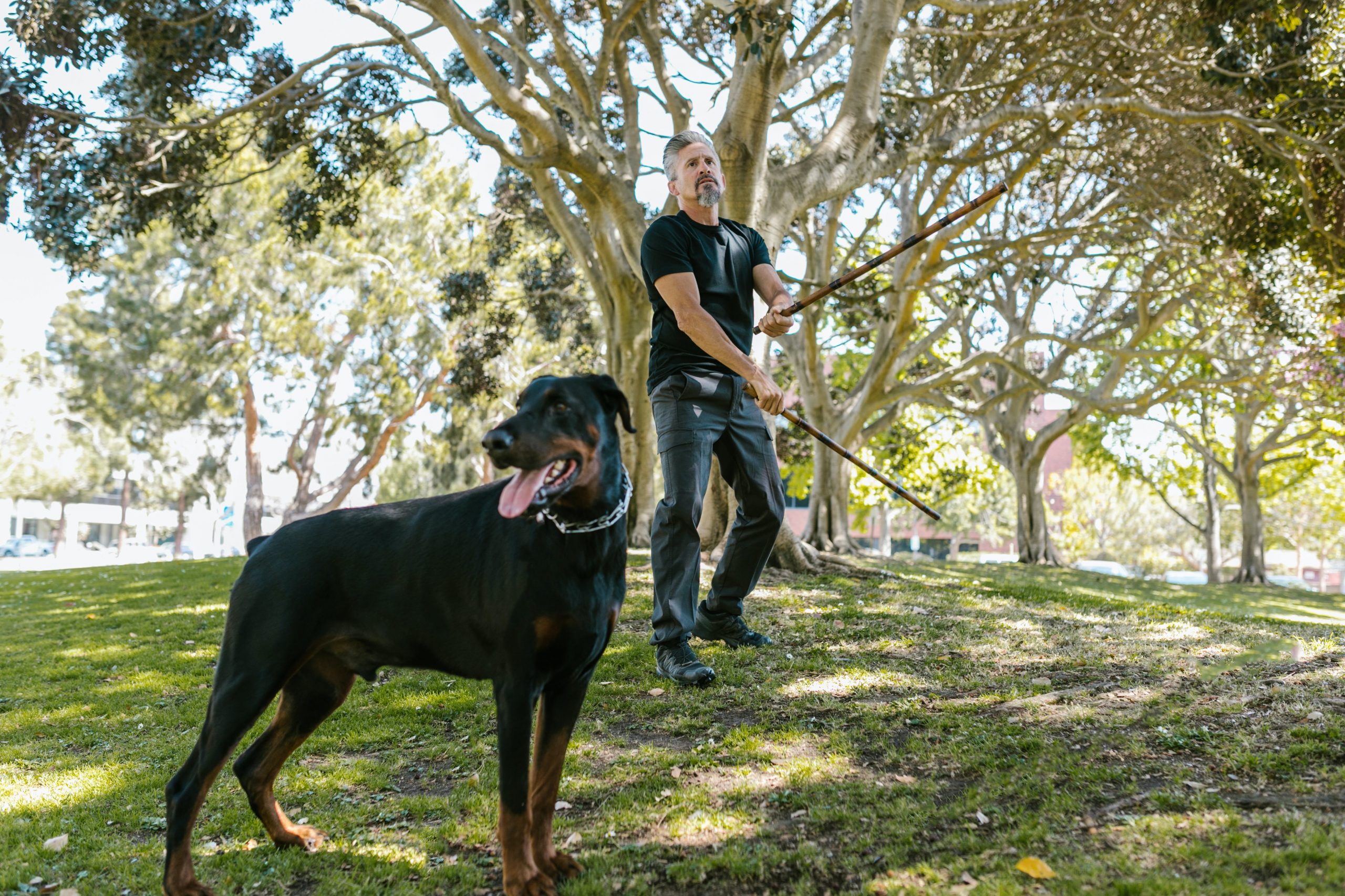Dogs have been known as loyal protectors and companions for thousands of years, serving not only as pets but also as family members who play an integral role in the safety and security of their home. Their instinct to protect stems from their ancestral herding behavior, where looking out for each other was essential to survival. Today, these protective instincts manifest in different ways to suit the pet environment in which they now live. Recognizing the signs that your dog is trying to protect you is important for understanding their behavior and ensuring that their efforts are directed positively and safely. It enhances the bond between dog and owner, promoting mutual respect and understanding. This article will highlight seven important signs that your dog is trying to protect you, explaining the motivations behind each behavior and how they fit into the broader context of dog loyalty and protectiveness.
1. Body Blocking
Body blocking is a protective behavior where a dog places itself between its owner and a perceived threat. This can be a subtle move, such as standing in front of you when someone approaches you, or more obvious, such as pushing you away from an unfamiliar situation. This behavior indicates that your dog is actively protecting you from danger. This is their way of saying that they are alert and ready to protect you from harm. Understanding this behavior as a protective act allows owners to appreciate their dog’s instincts and work on training methods that appropriately manage his protective reactions.
2. Barking at perceived threats
Barking is one of the most common signals a dog uses to alert its owner to potential dangers. When your dog barks at strangers, noises, or other animals, it is often an attempt to avoid potential threats and protect you. This vocalization serves as a deterrent to perceived threat and a signal that something unusual is happening. While barking can sometimes be excessive, recognizing it as a form of protection helps train your dog to differentiate between typical and dangerous situations, ensuring they respond appropriately.
3. Growling in warning
Growling is a more direct form of communication, indicating discomfort, fear, or the presence of a perceived threat. When a dog growls in certain situations, he is not simply expressing his discomfort; It is also trying to protect you by warning you against anything it thinks is dangerous. Growling should not be punished, as it is an important way the dog communicates its limits and warns before potentially engaging in more aggressive behavior. Understanding and respecting this warning allows owners to safely remove themselves and their dogs from potentially dangerous situations.
4. Keep a watchful eye
A dog trying to protect you will often display alert behavior, constantly watching and sometimes keeping an eye out for potential threats. This monitoring means they are assessing the environment for danger signs to keep you safe. Dogs with strong protective instincts take this role very seriously and can often be seen scanning their surroundings, especially in new or unfamiliar places. Recognizing this behavior as a protective measure allows owners to reassure their dogs and manage their alertness in a healthy way.
5. Physical condition
Protective dogs often set themselves up in such a way that they can take immediate action when needed. This may include lying or sitting in strategic locations, such as a door or next to their owner, especially in public places. This position isn’t just about comfort; This is a calculated choice for safety. By understanding this, owners can appreciate their dog’s protective instincts and work with them to ensure they feel secure in their role.
6. Following you closely
When a dog follows you closely, especially in unfamiliar environments, it is often a sign that he is trying to protect you. This behavior, known as “shadowing”, ensures that they are always close enough to intervene if danger arises. This shows their commitment to your safety and their readiness to act as your guardian. Recognizing this behavior as protective rather than needy allows for a more empathetic approach to managing their protective tendencies.
7. Alert you to unusual activity
Dogs have keen senses and often alert their owners to unusual activity or noises that the human ear cannot detect. This alerting behavior, whether through barking, being visibly alert, or nudging your owner, is a way of making sure you are aware of potential threats. Appreciating this aspect of your dog’s behavior can help strengthen the bond between you, as it highlights their role as a vigilant protector.
The characteristics of a dog when trying to protect its owner are diverse but deeply rooted in their instincts as herd animals. Recognizing and understanding these signals – body blocking, barking, growling, keeping an alert gaze, body posture, following closely and alerting to unusual activity – can significantly enhance the relationship between a dog and its owner. . This allows for a deeper appreciation of the dog’s protective instincts and provides opportunities to positively direct these behaviors. Through mutual respect and understanding, owners can ensure that their protective dogs feel valued and secure in their roles, promoting a safe and loving environment for all.

